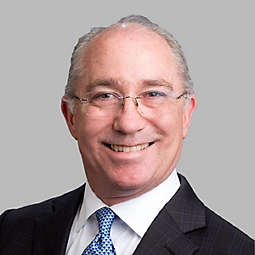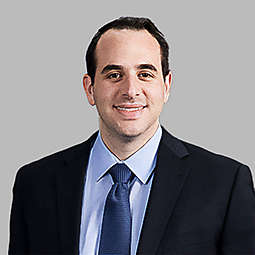Overview
Overview
NYLI Income Builder Fund seeks current income consistent with reasonable opportunity for future growth of capital and income.
A global, balanced approach
A global approach opens the door to a range of opportunities that offer higher income and improved growth potential while lowering risk through diversification.*
Dynamic risk management
As market conditions change, the investment team has the flexibility to manage portfolio risk as well as equity and fixed income exposures.
Global & Flexible multi-asset approach
A top down and bottom up strategy that allocates between 30-70 percent each to equities and fixed income based on some of the best opportunities in the markets.
Performance
Performance
Class A & INV: 5.5% maximum initial sales charge; a 1% CDSC may be imposed on certain redemptions made within 18 months of the date of purchase on shares that were purchased without an initial sales charge. Class B: CDSC up to 5% if redeemed within six years. Class C: 1% CDSC if redeemed within one year. Class I: No initial sales charge or CDSC.
Returns represent past performance which is no guarantee of future results. Current performance may be lower or higher. Investment return and principal value will fluctuate, and shares, when redeemed, may be worth more or less than their original cost. No initial sales charge applies on investments of $250,000 or more (and certain other qualified purchases). However, a contingent deferred sales charge of 1.00% may be imposed on certain redemptions made within 18 months of the date of purchase on shares that were purchased without an initial sales charge. Expenses stated are as of the fund's most recent prospectus.
Portfolio
Portfolio
Distribution & Yields
Distribution & Yields
Subsidized Yield: the yield of a fund that includes any fee waivers or reimbursements currently in place by the fund’s manager. This figure shows the income generated by the fund after accounting for reduced expenses, giving a more favorable representation of returns under current conditions.
Unsubsidized Yield: the yield of a fund that excludes any fee waivers or reimbursements. It reflects the income the fund would generate if the full expenses were charged, offering a view of returns without any temporary fee reductions.
Distributions may be comprised of ordinary income, net capital gains, and/or a return of capital (ROC) of your investment in the fund. Because the distribution rate and the 12-month rate may include a ROC, they should not be confused with yield or income. Please refer to the most recent Section 19 Notice, if applicable, for additional information regarding the composition of distributions. Final determination of a distribution’s tax character will be made on Form 1099 DIV sent to shareholders each January.
Distribution Rate: The distribution rate measures the percentage return in the form of dividends. It is calculated daily by annualizing the most recent dividend distribution and dividing by the daily share price (NAV or POP). If the Fund did not make a distribution as of the latest scheduled distribution date, "N/A" will be displayed.
12-month Rate: The 12-month rate measures the percentage return in the form of dividends. It is calculated monthly by taking the sum of the trailing 12-month dividend payments divided by the last month's ending share price (NAV or POP) plus any capital gains distributed over previous 12 months. If the Fund did not make any distributions over the previous 12 months, "N/A" will be displayed.
The 30 Day SEC Yield is calculated by dividing the net investment income per share for the first 30 days of the month by the offering price per share at the end of that period. The yield reflects the dividends and interest earned during the period, after the deduction of the Fund's expenses. Yield reflects a fee waiver and/or expense limitation agreement without which the 30 Day SEC Yield would have been lower.
Dividend distributions are the distribution of a dividend to mutual fund shareholders as of a certain date. The following Funds declare daily dividends: NYLI MacKay California Muni Fund, NYLI Floating Rate, NYLI MacKay High Yield Muni Bond Fund, NYLI MacKay U.S. Infrastructure Bond Fund, NYLI Money Market, NYLI MacKay New York Muni Fund, NYLI MacKay Short Term Muni Fund and NYLI MacKay Tax Free Bond.
Fees & Expenses
Fees & Expenses
Team
Team
Global equity manager with a distinct perspective on the long-term drivers of shareholder return.
Global asset management firm that manages U.S., non-U.S. and global equity strategies for institutional and intermediary clients; their investment strategy is based on fundamental research and seeks to invest in companies that can grow free cash flow and allocate it effectively for the benefit of shareholders.
Income and equity investment professionals offering a broad range of related strategies.
Boutique offering a range of fixed income and equity strategies including investment-grade high yield, bank loans and municipals as well as fundamental and systematic equities.

Neil Moriarty
Senior Managing Director, Co-Head of Global Fixed Income

Michael DePalma
Senior Managing Director, Co-Head of Global Fixed Income

Zachary Aronson
Director

Lesya Paisley
Director

Cameron White
Director
Offering multi asset strategies, market intelligence, and customized solutions
Multi-Asset Solution’s (MAS) is New York Life Investments’ specialist in multi-asset investing. The team offers multi asset strategies, market intelligence, and customized solutions to its strategic partners. Managed assets include NYLI funds, strategic partnerships and customized solutions with third parties.

Migene S. Kim, CFA
Managing Director

Jonathan Swaney
Managing Director
Offering multi asset strategies, market intelligence, and customized solutions
Multi-Asset Solution’s (MAS) is New York Life investments’ specialist in multi-asset investing. The team offers multi asset strategies, market intelligence, and customized solutions to its strategic partners. Managed assets include MainStay funds, strategic partnerships and customized solutions with third parties.
Literature
Literature
05/15/2025Fact Sheets.PDF0.1 MB
04/24/2025Product Commentary.PDF0.2 MB
-Summary Prospectus
-Prospectus
-Statement of Additional Information
BEFORE YOU INVEST
Before considering an investment in the Fund, you should understand that you could lose money.
The principal risk of investing in value funds is that the price of the security may not approach its anticipated value.
Investing in smaller companies involves special risks, including higher volatility and lower liquidity.
Investing in below investment grade securities may carry a greater risk of nonpayment of interest or principal than higher-rated bonds.
Floating rate funds are generally considered to have speculative characteristics that involve default risk of principal and interest, collateral impairment, non-diversification, borrower industry concentration, and limited liquidity.
Foreign securities are subject to interest rate, currency exchange rate, economic, and political risks. These risks may be greater for emerging markets.
Issuers of convertible securities may not be as financially strong as those issuing securities with higher credit ratings and are more vulnerable to economic changes.
The Fund may invest in derivatives, which may increase the volatility of the Fund's NAV and may result in a loss to the Fund.
The principal risk of mortgage dollar rolls is that the security the Fund receives at the end of the transaction may be worth less than the security the Fund sold to the same counterparty at the beginning of the transaction.
The principal risk of mortgage-related and asset-backed securities is that the underlying debt may be prepaid ahead of schedule, if interest rates fall, thereby reducing the value of the fund’s investment. If interest rates rise, less of the debt may be prepaid and the fund may lose money.
Funds that invest in bonds are subject to interest-rate risk and can lose principal value when interest rates rise.
MSCI World Index is a free float-adjusted market capitalization-weighted index that is designed to measure the equity market performance of developed markets.
Blended Benchmark Index consists of the MSCI World Index and the Bloomberg U.S. Aggregate Bond Index weighted 50%/50%, respectively.
Bloomberg U.S. Aggregate Bond Index is a broad-based benchmark that measures the investment-grade, U.S. dollar denominated, fixed-rate taxable bond market, including Treasuries, government-related and corporate securities, mortgage-backed securities (agency fixed-rate and hybrid adjustable-rate mortgage pass-throughs), asset-backed securities, and commercial mortgage-backed securities.
An investment cannot be made directly into an index.
Standard Deviation measures how widely dispersed a fund's returns have been over a specified period of time. A high standard deviation indicates that the range is wide, implying greater potential for volatility.
Alpha measures a fund's risk-adjusted performance and is expressed as an annualized percentage.
Beta is a measure of historical volatility relative to an appropriate index (benchmark) based on its investment objective. A beta greater than 1.00 indicates volatility greater than the benchmark's.
R-Squared measures the percentage of a fund's movements that result from movements in the index.
Sharpe Ratio shown is calculated for the past 36-month period by dividing annualized excess returns by annualized standard deviation.
Annual Turnover Rate is as of the most recent annual shareholder report.
The Morningstar Rating™ for funds, or "star rating", is calculated for managed products (including mutual funds, variable annuity and variable life subaccounts, exchange-traded funds, closed-end funds, and separate accounts) with at least a three-year history. Exchange-traded funds and open-ended mutual funds are considered a single population for comparative purposes. It is calculated based on a Morningstar Risk-Adjusted Return measure that accounts for variation in a managed product's monthly excess performance, placing more emphasis on downward variations and rewarding consistent performance (this does not include the effects of sales charges, loads, and redemption fees). The top 10% of products in each product category receive 5stars, the next 22.5% receive 4 stars, the next 35% receive 3 stars, the next 22.5% receive 2 stars, and the bottom 10% receive 1 star. The Overall Morningstar Rating for a managed product is derived from a weighted average of the performance figures associated with its three-, five-, and 10-year (if applicable) Morningstar Rating metrics. The weights are: 100% three-year rating for 36-59 months of total returns, 60% five-year rating/40% three-year rating for 60-119 months of total returns, and 50% 10-year rating/30% five-year rating/20% three-year rating for 120 or more months of total returns. While the 10-year overall star rating formula seems to give the most weight to the 10-year period, the most recent three-year period actually has the greatest impact because it is included in all three rating periods.









